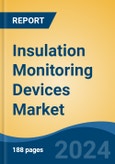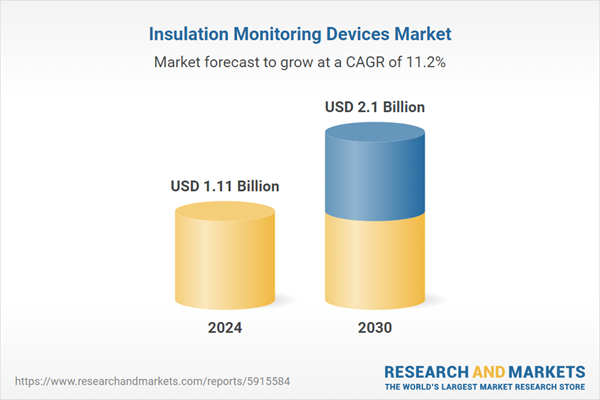Manufacturing is the fastest growing segment, North America is the largest regional market
Speak directly to the analyst to clarify any post sales queries you may have.
10% Free customizationThis report comes with 10% free customization, enabling you to add data that meets your specific business needs.
Key Market Drivers
The increasing emphasis on electrical safety and system reliability stands as a primary catalyst for the Global Insulation Monitoring Devices Market. Industries across all sectors are prioritizing robust electrical infrastructure to safeguard personnel and assets from potential hazards such as electric shock, fires, and equipment failure, recognizing the critical need for preventative measures. Insulation monitoring devices actively contribute to this objective by continuously assessing the insulation resistance of electrical systems, enabling early fault detection before severe damage or disruption occurs.Key Market Challenges
The substantial initial investment required for insulation monitoring devices, coupled with the inherent complexity of integrating them into existing electrical infrastructures, significantly hampers market growth. This financial barrier is particularly acute for smaller entities or those with older systems, where capital allocation often prioritizes immediate operational needs over extensive safety system overhauls. According to the Directorate-General for Internal Market, Industry, Entrepreneurship and SMEs' "Annual Report on European SMEs 2022/2023", small and medium-sized enterprises experienced a 1.2% decrease in real value added in 2023, reflecting considerable financial pressure. This economic strain makes it difficult for these businesses to justify the significant upfront costs associated with deploying new, sophisticated electrical safety equipment.Key Market Trends
The integration of IoT and AI for advanced analytics represents a pivotal transformation for the Global Insulation Monitoring Devices Market. This trend moves beyond basic fault detection to provide sophisticated predictive insights, significantly enhancing operational intelligence and system uptime. Manufacturers can leverage continuous data streams from connected insulation monitoring devices to analyze performance patterns and anticipate potential electrical failures before they materialize. According to the ifo Institute, in November 2024, artificial intelligence usage among German manufacturing firms increased to 31 percent, up from 17.3 percent in June 2023. This demonstrates a clear industry shift towards intelligent systems for improved decision making.Key Market Players Profiled:
- ABB Ltd
- Eaton Corporation plc
- Siemens AG
- Schneider Electric SE
- Megger Group Limited
- Doble Engineering Company
- General Electric Company
- Amperis Products S.L.
- Emerson Electric Co.
- Rockwell Automation Inc.
Report Scope:
In this report, the Global Insulation Monitoring Devices Market has been segmented into the following categories:By Mounting:
- Din Rail
- Screw Mounting
- Panel Mounting
By Response Time:
- Less than 7 Second
- More than 7 Second
By Vertical:
- Power Utilities
- Manufacturing
- Mining
- Healthcare
- Transportation
- Others
By Region:
- North America
- Europe
- Asia-Pacific
- South America
- Middle East & Africa
Competitive Landscape
Company Profiles: Detailed analysis of the major companies present in the Global Insulation Monitoring Devices Market.Available Customizations:
With the given market data, the publisher offers customizations according to a company's specific needs. The following customization options are available for the report.Company Information
- Detailed analysis and profiling of additional market players (up to five).
This product will be delivered within 1-3 business days.
Table of Contents
Companies Mentioned
The companies profiled in this Insulation Monitoring Devices market report include:- ABB Ltd
- Eaton Corporation plc
- Siemens AG
- Schneider Electric SE
- Megger Group Limited
- Doble Engineering Company
- General Electric Company
- Amperis Products S.L.
- Emerson Electric Co.
- Rockwell Automation Inc.
Table Information
| Report Attribute | Details |
|---|---|
| No. of Pages | 188 |
| Published | November 2025 |
| Forecast Period | 2024 - 2030 |
| Estimated Market Value ( USD | $ 1.11 Billion |
| Forecasted Market Value ( USD | $ 2.1 Billion |
| Compound Annual Growth Rate | 11.2% |
| Regions Covered | Global |
| No. of Companies Mentioned | 11 |









